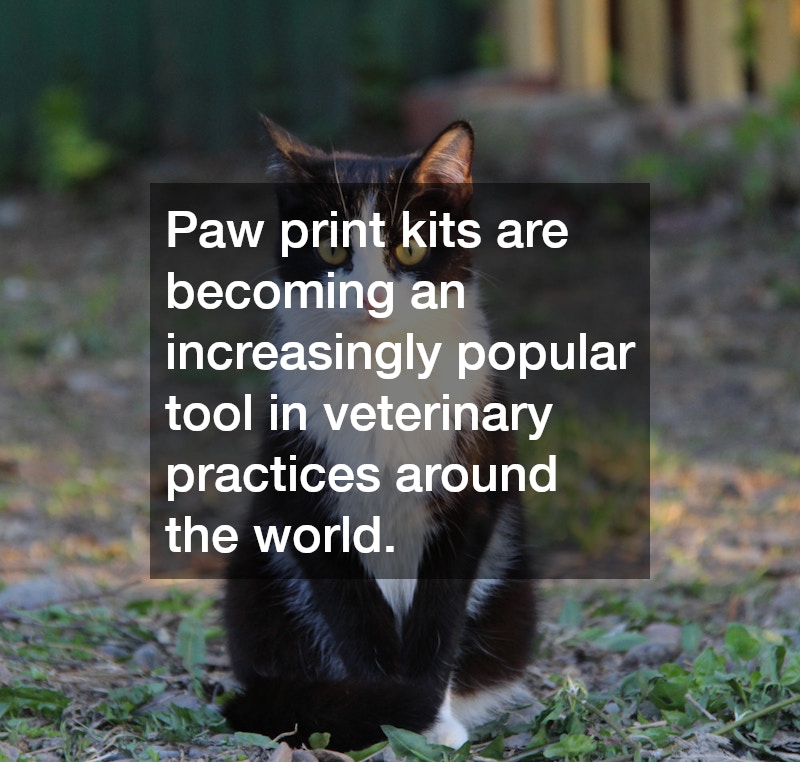The Role of Paw Print Kits in Veterinary Practices
Paw print kits are becoming an increasingly popular tool in veterinary practices around the world. This trend reflects a growing recognition of the emotional bond between pet owners and their animals, where the preservation of memories is significant.
The rising use of these kits underscores a shift in the way veterinary care intersects with pet-human relationships. They offer a tangible method for pet owners to commemorate their beloved animals, both in life and after they pass.
Veterinary clinics have adapted to this demand by integrating paw print kits into their routine practice, highlighting their dual role in serving both clinical needs and emotional wellness. This evolution in practices indicates an expanding scope of veterinary care.
How Are Paw Print Kits Used in Veterinary Practices?
Overview of Paw Print Kits
Paw print kits generally include non-toxic clay or ink pads that allow veterinarians to create a physical impression of a pet’s paw. These kits provide a simple and safe way to capture paw imprints, making them accessible to clinics of any size.
The kit components are designed to be used with ease, usually composed of materials compatible with the sensitive skin of animals. Many kits are one-time use, ensuring that each imprint is crisp and that materials are fresh.
Initially intended as mementos for pet owners, these kits have found broader applications in veterinary settings. Their flexible usage also allows for adaptations according to specific veterinary procedures or client preferences.
Step-by-step Guide to Using Paw Print Kits
Veterinarians start by ensuring the pet’s paw is clean and free from any dirt or debris to avoid interference with the impression quality. Next, the paw is gently pressed onto the clay or ink pad, creating a clear impression.
After imprinting, the material is allowed to dry completely to preserve the paw print. This process requires careful handling to maintain the detail and integrity of the paw print.
Finally, the dried impression is usually enclosed in a keepsake frame or box, often personalized with the pet’s name or a brief message. This final presentation preserves the memory while being convenient for display at home.
What Are the Benefits of Paw Print Kits for Pet Owners and Veterinarians?
Emotional Value for Pet Owners
For pet owners, paw print kits offer a cherished keepsake, encapsulating the unique imprint of their beloved animal. This souvenir not only serves as a tactile reminder but also strengthens the emotional connection beyond the pet’s lifetime.
These mementos can be particularly comforting during times of grief, providing a concrete representation of happier memories with their pet. The ability to tangibly hold onto a piece of their pet is invaluable for many owners.
Paw prints allow for the continuation of a legacy, ensuring that the bond between the pet and owner is everlasting. In this respect, they act not just as memorials but as ongoing symbols of love and companionship.
Clinical Advantages in Veterinary Care
Beyond their sentimental value, paw print kits offer clinical advantages within veterinary practice. This tool can enhance client communication and satisfaction, serving as a final compassionate gesture after treatment or procedures.
Paw print kits can also aid in a pet’s recovery process by involving owners in their care and progress, thereby reinforcing trust between veterinarian and client. They can symbolize a step forward in recovery or a celebration of successful procedures.
The inclusion of paw prints in the clinical process can lead to improved client adherence to pet care advice, as it embeds a deeper emotional commitment to the pet’s wellbeing. Such components add significant value to veterinary care.
Are There Any Challenges or Criticisms of Using Paw Print Kits?
Common Challenges in Implementation
One primary challenge is the initial cost and time investment required to incorporate paw print kits into regular veterinary routines. This might be a hurdle for smaller practices with limited resources.
Moreover, there is a learning curve associated with effectively creating high-quality paw prints, demanding attention and practice to perfect the technique. Inconsistent results can affect client satisfaction negatively.
Additionally, not all pet owners may perceive the value of paw print keepsakes, leaving the kits underutilized if not adequately promoted. Practices must therefore balance providing options without imposing preferences.
Critiques from Veterinary Professionals
Some veterinary professionals express concerns over the perceived commercialization of paw print kits, fearing they commodify emotional experiences. Critical voices question whether this trend detracts from more essential clinical objectives.
There is also the risk of these keepsakes being viewed as unnecessary upsells, potentially clouding the primary service objectives of veterinary care. This perception might damage the trust between clients and veterinarians.
Despite these critiques, many in the profession argue that paw print kits complement rather than compete with core veterinary services. As long as they enhance patient and client experience, their integration can be justified.
Conclusion
Paw print kits have carved out a unique role within veterinary practices, bridging the gap between clinical care and emotional fulfillment. Their capacity to provide cherished mementos while also supporting veterinary-patient relationships fortifies their presence in modern practice.
While certain challenges and critiques exist, the value that paw print kits offer to pet owners and veterinary professionals alike stands firm. These kits testify to the evolving nature of veterinary services, where emotional care holds as much importance as medical treatment.
Ultimately, paw print kits signify the melding of innovation and empathy in veterinary medicine, underscoring their enduring relevance as both therapeutic tools and beloved keepsakes. As the relationship between pets, their owners, and veterinarians deepens, so too does the role of paw print kits in these connections.

